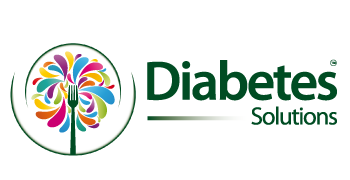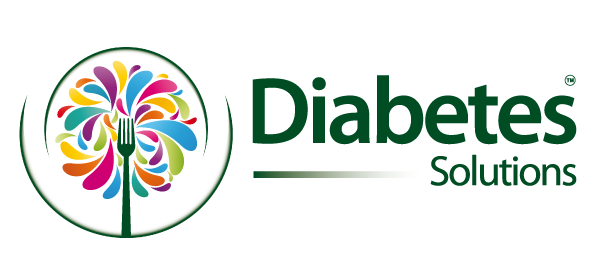Fibre is one of the most essential components of a healthy diet, yet it often doesn’t receive the attention it deserves. In the battle against high blood sugar and related conditions like pre-diabetes and type 2 diabetes, fibre plays a pivotal role.
Let’s look at what fibre is, its functions within the body, how it helps manage blood sugar levels, and provides a wealth of examples of fibre-rich foods.
Understanding Fibre: The Basics
Fibre is a type of carbohydrate found in plant-based foods. Unlike other carbohydrates, fibre is not digested by the human body. It passes relatively intact through our digestive system, which is precisely why it is so beneficial.
Fibre is classified into two main types: soluble and insoluble.
- Soluble Fibre: This type dissolves in water to form a gel-like substance. It can help lower blood cholesterol and glucose levels. Common sources include oats, peas, beans, apples, citrus fruits, carrots, barley, and psyllium.
- Insoluble Fibre: This type does not dissolve in water. It adds bulk to the stool and aids in the movement of material through the digestive system. Whole-wheat flour, wheat bran, nuts, beans, and vegetables like cauliflower, green beans, and potatoes are rich in insoluble fibre.
The Functions of Fibre in the Body
Fibre’s journey through the digestive system brings about numerous health benefits. Here’s a closer look at what fibre does in the body:
- Promotes Healthy Digestion: By adding bulk to the stool and aiding its movement, fibre helps maintain regular bowel movements and prevents constipation. Insoluble fibre is particularly effective in this regard.
- Aids in Weight Management: Fibre-rich foods tend to be more filling than low-fibre foods, helping you feel full for longer. This can help control appetite and reduce overall calorie intake, which is crucial for weight management.
- Lowers Cholesterol Levels: Soluble fibre can reduce the absorption of cholesterol into your bloodstream, thus helping lower total blood cholesterol levels and reducing the risk of heart disease.
- Regulates Blood Sugar Levels: Perhaps one of the most significant benefits of fibre, especially soluble fibre, is its ability to slow the absorption of sugar and improve blood sugar levels. This is particularly beneficial for people with diabetes or those at risk of developing diabetes.
How Fibre Helps Control Blood Sugar Levels
The relationship between fibre and blood sugar control is intricate and profound. Here’s how fibre works to keep blood sugar levels in check:
- Slows Digestion and Absorption: Soluble fibre slows the digestion and absorption of carbohydrates, leading to a more gradual release of glucose into the bloodstream. This helps prevent the sharp spikes in blood sugar levels that can be harmful over time.
- Improves Insulin Sensitivity: By promoting a slower, steadier absorption of sugar, fibre can help improve the body’s sensitivity to insulin. Improved insulin sensitivity means that the body can use glucose more effectively, reducing the risk of insulin resistance – a precursor to type 2 diabetes.
- Enhances Satiety: Fibre-rich foods tend to be more satisfying and can help control hunger and cravings. This is particularly important in managing weight, which is a key factor in maintaining healthy blood sugar levels. Excess weight, particularly around the abdomen, is linked to insulin resistance and type 2 diabetes.
Examples of Fibre-Rich Foods
Incorporating fibre into your diet doesn’t have to be difficult. Here are some excellent sources of both soluble and insoluble fibre:
- Fruits: Apples, bananas, oranges, strawberries, raspberries, pears, and kiwi. Most fruits contain both soluble and insoluble fibre.
- Vegetables: Carrots, beets, broccoli, Brussels sprouts, kale, spinach, sweet potatoes, and squash. These vegetables are packed with fibre and other essential nutrients.
- Legumes: Beans, lentils, chickpeas, and peas. Legumes are particularly high in both types of fibre and are also excellent sources of protein.
- Whole Grains: Oats, barley, quinoa, brown rice, and whole-wheat products. Whole grains retain all parts of the grain, including the fibre-rich bran. However, of note is that while whole grains are better than processed grains, from a blood sugar perspective whole grains should be consumed in moderation.
- Nuts and Seeds: Almonds, chia seeds, flaxseeds, and sunflower seeds. These not only provide fibre but also healthy fats and protein.
Practical Tips for Increasing Fibre Intake
Now that you understand the importance of fibre, here are some practical steps to help you increase your fibre intake:
- Incorporate Vegetables in Every Meal: Aim to fill at least half of your plate with vegetables at each meal. Add a side salad or steamed vegetables to your lunch and dinner.
- Snack Smart: Opt for high-fibre snacks such as fruit, raw vegetables with hummus, or a handful of nuts and seeds.
- Choose Whole Grains: Replace refined grains with whole grains. For example, choose brown rice instead of white rice, and whole-wheat bread instead of white bread. But remember… moderation!
- Include Legumes: Add beans, lentils, or chickpeas to soups, salads, and stews. They are not only high in fibre but also rich in protein and other nutrients.
- Stay Hydrated: Drinking plenty of water is essential when increasing fibre intake. Fibre works best when it absorbs water, helping to keep your digestive system moving smoothly.
- Read Labels: When shopping, look for products that list whole grains as the first ingredient and contain at least 3 grams of fibre per serving.
Fibre is a powerhouse nutrient that plays a vital role in maintaining overall health and controlling blood sugar levels. By understanding the types of fibre, how it functions in the body, and the best sources of fibre-rich foods, you can make informed choices that benefit your health.





